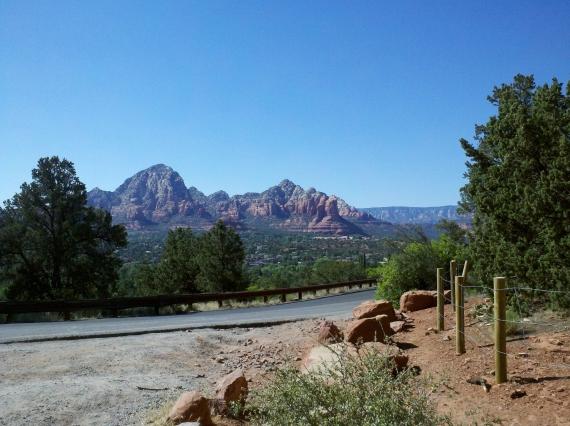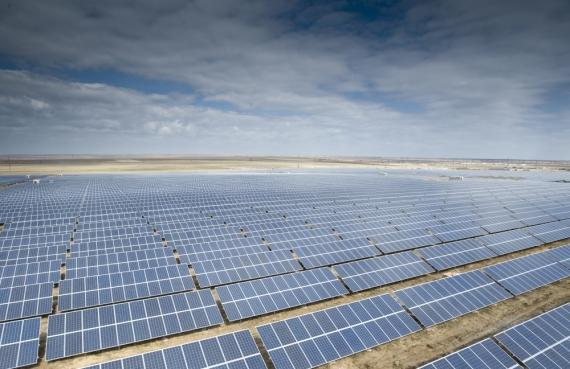Bringing Utilities to an Undeveloped Plot of Land - What to Expect
Posted: November 22, 2015 by LandCentury

You found the perfect plot of land, but theres just one problem: there are no utility connections. Ideally, its best to invest in undeveloped land that already has utility connections. But we dont live in a perfect world, and sometimes, the perfect plot of land is simply unconnected to local utilities. If you find yourself in this situation, you may be wondering what to expect when connecting to nearby utilities.
Dont Be Fooled By Nearest Utilities
When searching for land, you may have come across listings that state utilities are nearby. But the term nearby is vague, and doesnt really tell you much about how far away the nearest hook-ups are. They may be right across the street, or they may be over a mile away. The best thing you can do is research to find out how far away utility hookups really are.
Costs Will Vary Depending on Your Location
How far will utility lines have to be run? This is one of the primary factors in determining the cost of running utilities to your property. The further your property is from utility connections, the more costly it will be to connect your property.
Take, for example, one investor who purchased a piece of property off of a paved county road. Because he was close to utility connections, the cost to connect to electricity and water was free. In this case, connecting costs were minimal and only included:
- Connecting a main water pipe to the home: $300
- Natural gas line hook-up: $150
- Septic tank installation: $3,000
Not everyone is as lucky as this investor. In most cases, it can cost anywhere from $10,000-$30,000 to hook up to nearby utilities. Again, the cost will be dependent on your location and proximity to utility connections. Always budget for more than the estimated costs because costs always wind up running over.
Distance isnt the only consideration. Some cities and power companies charge more than others to run lines. The city and county in which you live will play a major role in the cost of running lines to your property.
You May Need Approval from Neighbors to Run Lines
Remember the lucky investor we talked about earlier? He did face one issue when connecting to the local power company: he needed permission from his neighbors to install a power pole and line. Luckily, one neighbor was okay with the installation, but the other was not. Aside from having to get permission, the investor also had to give 15 feet of right-away on either side of the property.
You May Need to Check the Quality of Your Propertys Water Source
Naturally, youll need to connect to a water source to supply the property with this vital resource. Generally, you have two options: dig a well, or connect to city/municipal water.
Depending on the property, it may be more affordable to dig a well. But if you choose to go this route, you will need to check the quality of the propertys water source before you start this type of project. More often than not, well systems need some sort of filtration to remove bacteria and salts.
Connecting to city/municipal water is more convenient, but can be costly. Its important to compare the cost of both options before making a final decision.
Connecting to the Grid Isnt the Only Option
Connecting to the local power company is the simplest and most convenient option, but its not always the best. Estimating the cost of this type of hookup can be difficult, and there are several things youll need to consider, including:
- Will your powerlines be run overhead, or underground?
- Is this area prone to brownouts or blackouts?
- How many transformers will you need?
- Will you need a backup generator?
If connect to the local power company isnt feasible or not an affordable option, you may want to look into alternative power sources, such as wind or solar. Just keep in mind that most wind power systems dont provide enough power to run a typical home. Solar, on the other hand, can generate more than enough energy. In fact, you may be able to resell excess power to the local power company.
Youll Need Adequate Space for a Septic System
If you plan on installing a septic tank on the property, youll need to make sure that you have adequate space for the system. Remember, you wont be able to build or drive in this area. And if youre installing a well system, youll need additional space for a buffer area.
In most cases, the cost to install a septic system will exceed the cost of hooking up to a local sewer system. That said, the costs of operating an independent septic system are low compared to paying a monthly fee for your sewer connection. The most advanced septic systems can cost $20,000 or more, but for a simple, basic tank system, you may pay as little as $3,000.
Expect the Process to Take Time A Lot of Time
If youre hoping to put in a work order for utility connections today and be up and running in the next month, youre going to be in for a rude awakening. This is a process that takes time lots of time. Getting the permits alone can take weeks or months, and thats if there are no hiccups along the way. Delays are not necessarily common, but they can cause issues.
Lets not forget the time it will take the run the lines. Underground lines will take longer and will generally cost more, but poles may require permission from your neighbors (which can also add time). Expect to wait at least a few months for all utility connections to be up and running.
Bringing utilities to an undeveloped plot of land can be costly and time-consuming, but if youve found the ideal property, it may be worthwhile especially if you purchased the property at a rock bottom price. Be sure to get accurate estimates of costs, and budget for more as costs typically run higher.
Dont Be Fooled By Nearest Utilities
When searching for land, you may have come across listings that state utilities are nearby. But the term nearby is vague, and doesnt really tell you much about how far away the nearest hook-ups are. They may be right across the street, or they may be over a mile away. The best thing you can do is research to find out how far away utility hookups really are.
Costs Will Vary Depending on Your Location
How far will utility lines have to be run? This is one of the primary factors in determining the cost of running utilities to your property. The further your property is from utility connections, the more costly it will be to connect your property.
Take, for example, one investor who purchased a piece of property off of a paved county road. Because he was close to utility connections, the cost to connect to electricity and water was free. In this case, connecting costs were minimal and only included:
- Connecting a main water pipe to the home: $300
- Natural gas line hook-up: $150
- Septic tank installation: $3,000
Not everyone is as lucky as this investor. In most cases, it can cost anywhere from $10,000-$30,000 to hook up to nearby utilities. Again, the cost will be dependent on your location and proximity to utility connections. Always budget for more than the estimated costs because costs always wind up running over.
Distance isnt the only consideration. Some cities and power companies charge more than others to run lines. The city and county in which you live will play a major role in the cost of running lines to your property.
You May Need Approval from Neighbors to Run Lines
Remember the lucky investor we talked about earlier? He did face one issue when connecting to the local power company: he needed permission from his neighbors to install a power pole and line. Luckily, one neighbor was okay with the installation, but the other was not. Aside from having to get permission, the investor also had to give 15 feet of right-away on either side of the property.
You May Need to Check the Quality of Your Propertys Water Source
Naturally, youll need to connect to a water source to supply the property with this vital resource. Generally, you have two options: dig a well, or connect to city/municipal water.
Depending on the property, it may be more affordable to dig a well. But if you choose to go this route, you will need to check the quality of the propertys water source before you start this type of project. More often than not, well systems need some sort of filtration to remove bacteria and salts.
Connecting to city/municipal water is more convenient, but can be costly. Its important to compare the cost of both options before making a final decision.
Connecting to the Grid Isnt the Only Option
Connecting to the local power company is the simplest and most convenient option, but its not always the best. Estimating the cost of this type of hookup can be difficult, and there are several things youll need to consider, including:
- Will your powerlines be run overhead, or underground?
- Is this area prone to brownouts or blackouts?
- How many transformers will you need?
- Will you need a backup generator?
If connect to the local power company isnt feasible or not an affordable option, you may want to look into alternative power sources, such as wind or solar. Just keep in mind that most wind power systems dont provide enough power to run a typical home. Solar, on the other hand, can generate more than enough energy. In fact, you may be able to resell excess power to the local power company.
Youll Need Adequate Space for a Septic System
If you plan on installing a septic tank on the property, youll need to make sure that you have adequate space for the system. Remember, you wont be able to build or drive in this area. And if youre installing a well system, youll need additional space for a buffer area.
In most cases, the cost to install a septic system will exceed the cost of hooking up to a local sewer system. That said, the costs of operating an independent septic system are low compared to paying a monthly fee for your sewer connection. The most advanced septic systems can cost $20,000 or more, but for a simple, basic tank system, you may pay as little as $3,000.
Expect the Process to Take Time A Lot of Time
If youre hoping to put in a work order for utility connections today and be up and running in the next month, youre going to be in for a rude awakening. This is a process that takes time lots of time. Getting the permits alone can take weeks or months, and thats if there are no hiccups along the way. Delays are not necessarily common, but they can cause issues.
Lets not forget the time it will take the run the lines. Underground lines will take longer and will generally cost more, but poles may require permission from your neighbors (which can also add time). Expect to wait at least a few months for all utility connections to be up and running.
Bringing utilities to an undeveloped plot of land can be costly and time-consuming, but if youve found the ideal property, it may be worthwhile especially if you purchased the property at a rock bottom price. Be sure to get accurate estimates of costs, and budget for more as costs typically run higher.




